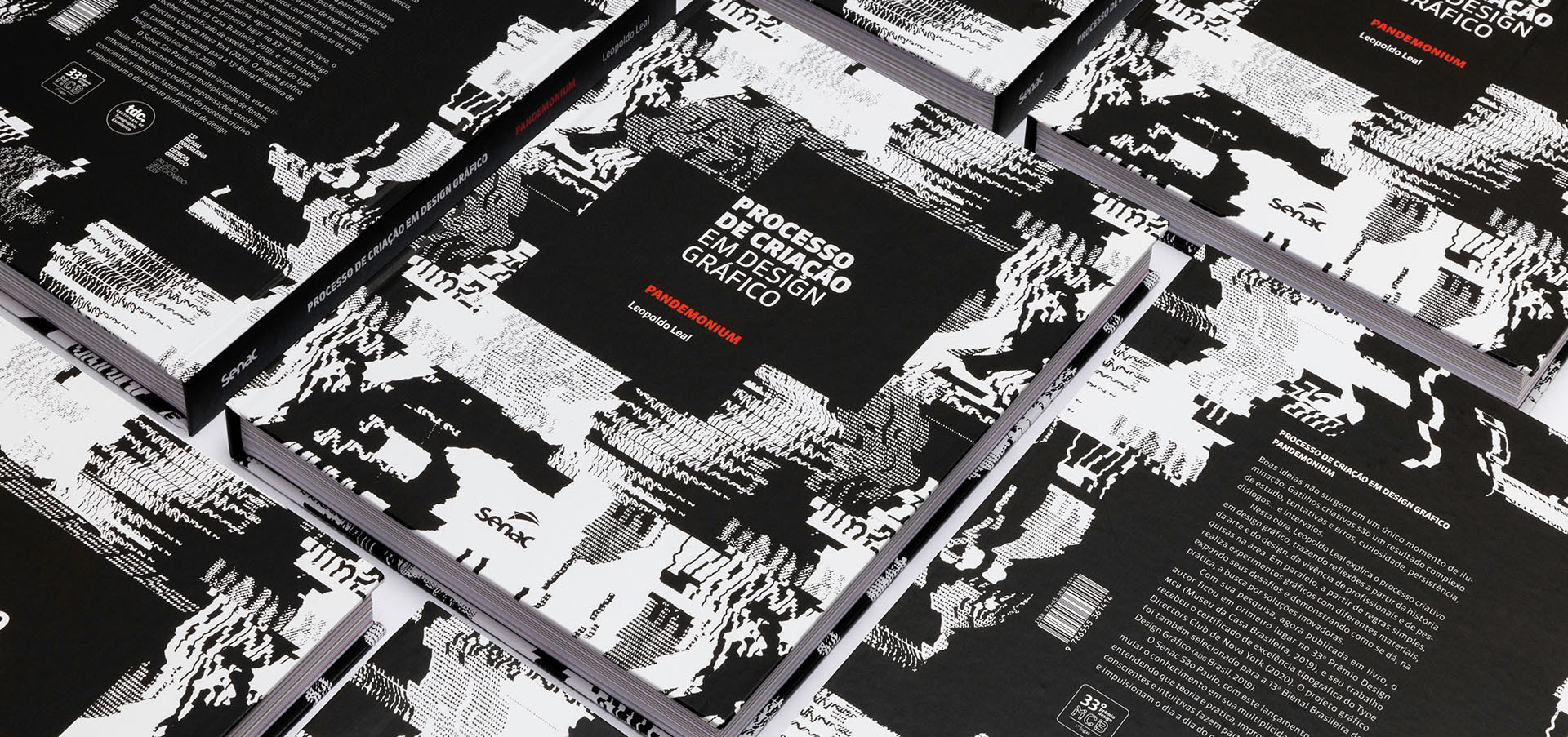ABOUT PANDEMONIUM
In John Milton’s Paradise Lost, Pandemonium is the capital of hell, the place where demons have a board meeting in order to discuss their plans. It also means confusion, chaos, and commotion. Such a metaphor can be used to describe the creative process of a graphic designer, whose mind functions as an overflown cauldron filled with interconnected information in a complex network. Contrary to popular belief, ideas are not a result of divine inspiration or orderly and predictable thinking. They come to life due to repetitive practice, effort and experimentation, which are characteristics of the designer’s own repertoire.
Processo de criação em design gráfico: Pandemonium is the book by Leopoldo Leal, result of his Ph.D. dissertation presented in 2019, which focused on understanding the graphic design creative process in which chance and experimentation are inserted.
It was based on the eight phases of the creative process described by Robert Keith Sawyer. These phases constitute the structure of the project and provide clarity and understanding of the entire creative process, which does not occur in a linear standard. It is as if the practical items of an experimental work in design originate from any material such as punch cards, craft sticks or a collection of bar codes. Even after establishing a point of arrival—in the case of experiments, the design of the word “pandemonium”—, the outcome will not necessarily be known in advance, for it will depend on the paths and decisions to be taken. The creative process is carried out as the project develops, assuming deviations, errors, improvisations and surprises which add up to its formation.
"PANDEMONIUM, THE PALACE OF SATAN RISES, SUDDENLY BUILT OUT OF THE DEEP: THE INFERNAL PEERS THERE SIT IN COUNCIL."
Awards

"LEARNING (…) THROUGH EXPERIMENTATION TAKES MORE TIME, ENTAIL DETOURS AND WRONG DIRECTIONS. WALK BEGINS WITH CRAWLING, AND SPEAKING WITH BABY TALK."


Leopoldo Leal holds a Ph.D. in design from FAUUSP. He is a professor for the SENAC graduate program and at EBAC. In over 20 years of experience, he has worked as a designer at Landor, Interbrand, Futurebrand and GAD ’Branding.
His book Creation process in graphic design: Pandemonium, is a result of his Ph.D. dissertation which was awarded in 1st place at the “Museu da Casa Brasileira” Award, nominated for the Type Directors Club of New York (TDC66), as well as for the 13th Biennial of “ADG”, Brasil Design Award 2020 and LAD Awards 2021.
For now, Leopoldo has intensified his research on creative processes in graphic design, lecturing and producing graphic workshops and experiments.







